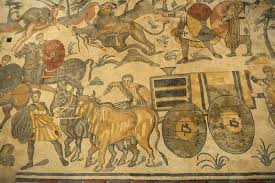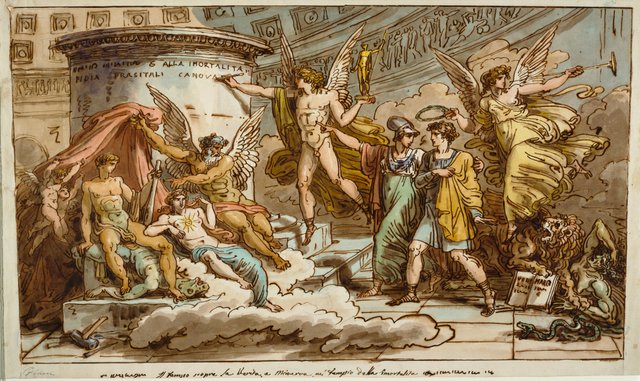History of Art

starting with the 12th century, crucial socio-political changes occurred in the Deccan, south of the Krishna river. at some point of this era, the Hoysalas, native Kannadigas from the Malnad location (hill usa in modern-day Karnataka) have been on the ascendant as a political electricity.[10][11][12][13] they may be recognised to have existed as chieftains from the mid-tenth century once they prominent themselves as subordinates of the Western Chalukyas of Kalyani.[14] In 1116, Hoysala King Vishnuvardhana defeated the Cholas of Tanjore and annexed Gangavadi (elements of cutting-edge southern Karnataka),[15] hence bringing the vicinity again underneath local rule. inside the following many years, with the waning of the Chalukya strength, the Hoysalas proclaimed independence and grew into one of the most powerful ruling households of southern India.[2][16] therefore, literature in Kannada, the local language, flourished inside the Hoysala empire.[17] This literature can be widely subdivided as follows: works dominated with the aid of the issues of Jain writings,[8] contrasting works by way of Veerashaiva writers not belonging to the vachana poetic tradition,[18] rebuttals to Shaiva writings from Jain writers,[19] early brahminical works (Vaishnava),[20][21] works from the beginning of the Bhakti (devotional) motion in the Kannada-speakme location, writings on secular topics,[22] and the primary writings in local metres (ragale, sangatya and shatpadi).[23][24][25]
As in in advance centuries, Jain authors wrote about tirthankars (saints), princes and different personages critical to the Jain faith. Jain variations of the Hindu epics such as the Ramayana and Bhagavata (testimonies of Hindu god Krishna) have been additionally written.[26][27] in step with R. Narasimhacharya, a stated scholar on Kannada literature, more Jain writers wrote in Kannada than in some other Dravidian language for the duration of the "Augustan age" of Kannada literature, from the earliest known works to the twelfth century.[28] The Veerashaiva writers, devotees of the Hindu god Shiva, wrote about his 25 paperwork of their expositions of Shaivism. Vaishnava authors wrote treatments of the Hindu epics, the Ramayana, the Mahabharata and the Bhagavata.[29] Breaking far from the vintage Jain lifestyle of the usage of the champu shape for writing Kannada literature, Harihara penned poems inside the ragale metre in Siva-ganada-ragalegalu (1160). His nephew Raghavanka established the shatpadi lifestyle through writing a unique version of the tale of King Harishchandra in Harishchandra Kavya (1200). Sisumayana added the sangatya metre in his Anjanacharita and Tripuradahana (1235).[30][31] however, some students continued to employ Sanskritic genres including champu (Ramachandra Charitapurana),[32] shataka (100 verse compositions, Pampa sataka)[18] and ashtaka (eight line verse compositions, Mudige ashtaka).[33]
the exact beginnings of the haridasa movement in the Kannada-talking region were disputed. Belur Keshavadasa, a mentioned Harikatha pupil, claimed in his book Karnataka Bhaktavijaya that the motion changed into stimulated by way of saint Achalananda Dasa of Turvekere (inside the modern Tumkur district) inside the 9th century.[34] but, neither the language used in Achalananda Dasa's compositions nor the discovery of a composition with the pen name "Achalanada Vitthala", which mentions the thirteenth-century truth seeker Madhvacharya, lends aid to the 9th-century theory. Naraharitirtha (1281), one among earliest disciples of Madhvacharya, is consequently considered the earliest haridasa to put in writing Vaishnava compositions in Kannada.[35] Secular topics were popular and included treatises on poetry (Sringararatnakara) and writings on natural sciences (Rattasutra), mathematics (Vyavaharaganita), fiction (Lilavati), grammar (Shabdamanidarpana), rhetoric (Udayadityalankara) and others.[8][22][26][36]
important contributions were made by way of some outstanding literary families. One Jain family produced several authors, along with Mallikarjuna, the stated anthologist (1245); his brother-in-law Janna (1209), the court poet of King Veera Ballala II; Mallikarjuna's son Keshiraja (1260), considered by using D. R. Nagaraj, a scholar on literary cultures in history, to be the best theorist of Kannada grammar; and Sumanobana, who turned into in the court docket of King Narasimha I and became the maternal grandfather of Keshiraja.[37][38] Harihara (1160) and his nephew Raghavanka (1200), poets who set the trend for using native metres, came from a Shaiva circle of relatives (devotees of the god Shiva).[37]

The guide of the Hoysala rulers for the Kannada language became strong, and this is seen even of their epigraphs, often written in polished and poetic language, rather than prose, with illustrations of floral designs in the margins.[39] further to the Hoysala patronage, royal assist changed into loved by using Kannada poets and writers in the course of this period inside the courts of neighbouring kingdoms of the western Deccan. The Western Chalukyas, the Southern Kalachuris, the Seuna Yadavas of Devagiri and the Silharas of Kolhapur are a number of the ruling households who enthusiastically used Kannada in inscriptions and promoted its literature.[39][40][41][42]
Writers bilingual in Kannada and Telugu won recognition which brought about interplay between the two languages, a fashion that continued into cutting-edge times. The Veerashiva canon of the Kannada language changed into translated or adapted into Telugu from this time period.[43] Palkuriki Somanatha (1195), a devotee of social reformer Basavanna, is the maximum 9aaf3f374c58e8c9dcdd1ebf10256fa5 of these bilingual poets. The Chola chieftain Nannechoda (c. 1150) used many Kannada phrases in his Telugu writings.[44] After the decline of the Hoysala empire, the Vijayanagara empire kings similarly supported writers in both languages. In 1369, stimulated through Palkuriki Somanatha, Bhima Kavi translated the Telugu Basavapurana to Kannada,[45] and King Deva Raya II (c. 1425) had Chamarasa's landmark writing Prabhulingalile translated into Telugu and Tamil.[46] Many Veerashaiva writers in the courtroom of the 17th century kingdom of Mysore were multilingual in Kannada, Telugu and Sanskrit at the same time as the Srivaishnava (a sect of Vaishnavism) Kannada writers of the courtroom have been in opposition with the Telugu and Sanskrit writers.[47]
statistics from cutting-edge statistics regarding several writers from this era whose works are taken into consideration misplaced include: Maghanandi (probable creator of Rama Kathe and guru of Kamalabhava of 1235), Srutakirti (guru of Aggala, and author of Raghava Pandaviya and probably a Jina-stuti, 1170), Sambha Varma (mentioned by using Nagavarma of 1145),[48] Vira Nandi (Chandraprabha Kavyamala, 1175),[49] Dharani Pandita (Bijjala raya Charita and Varangana Charita),[50] Amrita Nandi (Dhanvantari Nighantu), Vidyanatha (Prataparudriya), Ganeshvara (Sahitya Sanjivana),[51] Harabhakta, a Veerashaiva mendicant (Vedabhashya, 1300), and Siva Kavi (creator of Basava Purana in 1330)